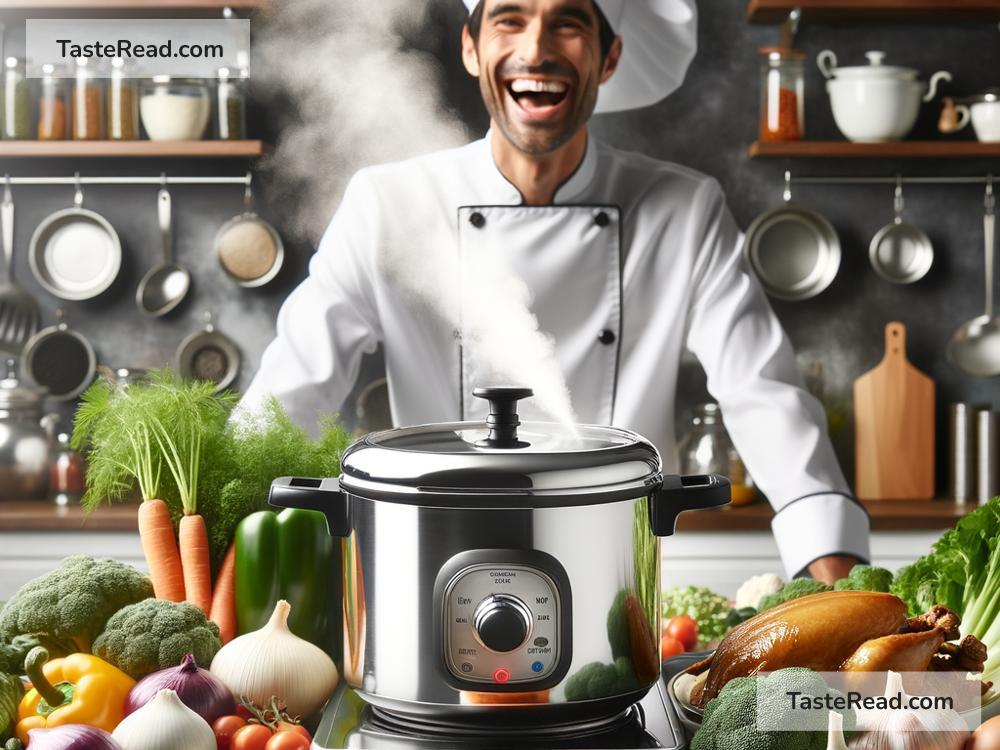The Science of Cooking with Pressure: Techniques and Tips
Cooking is both an art and a science, and using a pressure cooker is one of the most fascinating ways to blend them together. Pressure cooking has been around for centuries, but many people are still unsure about how it works or how to use it effectively. In this blog, we’ll explore the science behind pressure cooking and share some simple techniques and tips to help you unlock its full potential.
What is Pressure Cooking?
Pressure cooking is a method that uses high pressure and steam to cook food quickly. The pressure cooker traps steam inside, raising the temperature and speeding up the cooking process. This innovative technique can create tender meats, flavorful stews, and perfectly cooked beans or rice in a fraction of the time it would take with traditional methods.
How Does It Work?
To understand pressure cooking, let’s break it down:
-
Steam and Pressure: When you heat liquid (like water or broth) in a sealed pressure cooker, it turns into steam. As the steam builds up, the pressure inside the cooker increases.
-
Higher Boiling Point: Normally, water boils at 100°C (212°F) at sea level. But under pressure, the boiling point becomes higher—around 120°C (250°F). This hotter steam cooks food faster.
-
Faster Cooking: The combination of high temperature and pressure means that heat penetrates food more quickly, softening tough cuts of meat or cooking grains evenly. This makes pressure cooking great for time-saving and achieving delicious results.
Benefits of Pressure Cooking
Pressure cooking offers several advantages:
-
Time-Saving: A pressure cooker can cut cooking time by up to 70%, making it perfect for busy days or meal prep.
-
Energy-Efficient: Since it cooks faster, a pressure cooker uses less energy than other cooking methods like boiling or baking.
-
Nutrient Retention: Pressure cooking preserves vitamins and minerals in food better than boiling because less water is used, and cooking times are shorter.
-
Enhanced Flavors: Foods cooked under pressure often have deeper, richer flavors because the sealed environment traps moisture and aromas.
Techniques for Cooking with Pressure
Here are some basic techniques that will help you make the most of your pressure cooker:
1. Understand Your Pressure Cooker
Pressure cookers come in two types: stovetop and electric. Stovetop models require manual heat control, while electric models have pre-programmed settings and timers. Familiarize yourself with the one you’ll be using, and always check the user manual for specific instructions.
2. Use the Right Amount of Liquid
Steam is essential for creating pressure, so you’ll need liquid—usually water, broth, or sauce. Most recipes require at least ½ to 1 cup of liquid. Avoid overfilling the cooker; it should be no more than two-thirds full.
3. Adjust for Altitude
If you live in a high-altitude area, cooking may take slightly longer because the air pressure is lower. Check your pressure cooker’s manual for suggested adjustments.
4. Layer Ingredients Strategically
When cooking dishes with multiple components, like a stew, layer ingredients thoughtfully. Dense items like meat or root vegetables should go at the bottom as they take longer to cook. Lighter items, like greens or rice, can be added later.
5. Quick vs. Natural Release
Once cooking is complete, there are two ways to release pressure:
– Quick Release: Use the valve to release steam rapidly. This is ideal for delicate foods like vegetables to avoid overcooking.
– Natural Release: Let the pressure reduce gradually on its own (takes 10-15 minutes). This is better for stews or tougher meats as it allows flavors to develop.
6. Avoid Overcooking
Pressure cookers cook food faster than you might expect, so take care not to overcook. For example, beans can turn mushy if left on high pressure for too long.
Tips for Perfect Pressure Cooking
1. Prep Ingredients Ahead
Cut meat, vegetables, and other ingredients into manageable sizes to ensure even cooking. For example, dice potatoes into chunks, or chop large veggies before adding them to the cooker.
2. Brown Meat First
For added flavor, sear meat before pressure cooking. Many cookers have a sauté function, but you can also do this in another pan before transferring to the pressure cooker.
3. Avoid Overcrowding
Leave enough space inside the cooker for steam to circulate and build pressure. Overloading can lead to uneven cooking.
4. Clean the Sealing Ring
The sealing ring keeps steam trapped, so it must be clean and free of damage. Regularly check this part of your pressure cooker and replace it if needed.
5. Experiment with Recipes
Pressure cooking isn’t just for savory dishes—try making desserts like cheesecake or rice pudding! With practice, you’ll discover a wide variety of meals you can prepare under pressure.
Common Myths About Pressure Cooking
Many people hesitate to use pressure cookers because they worry about safety or quality issues. Let’s clear up some common myths:
- Myth: Pressure cookers are unsafe and can explode.
-
Truth: Modern pressure cookers have safety features like locking lids and steam release valves, making them safe to use.
-
Myth: Pressure cooking kills nutrients.
- Truth: Pressure cooking actually preserves nutrients better than boiling or frying.
Conclusion
Pressure cooking is a time-saving, efficient, and versatile cooking method that can revolutionize your kitchen. Whether you’re a beginner or a seasoned home chef, understanding the science behind pressure cookers will help you create delicious, nutritious meals with less effort.
Experiment with different recipes, don’t be afraid to make mistakes, and enjoy the journey of mastering the science of cooking with pressure. Happy cooking!


